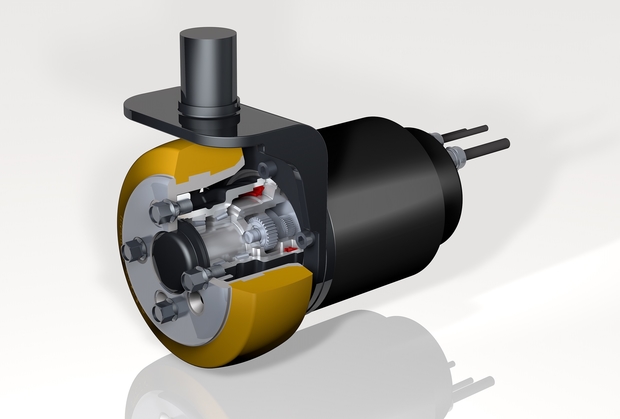What the first steps towards a change in the value-added chain away from the combustion engine to e-mobility might look like will be shown by Baden-Württemberg at Hannover Messe, 25-29 April. More than 40 mostly medium-sized firms and research institutes based in the federal state will present their products and ideas at the special MobiliTec exhibition area.
“Electrification is the future job motor.” This was the summary of the e-mobil BW 2015 structural study conducted by the Fraunhofer Institute for Industrial Engineering IAO. The automobile and supplier industry in the southwest are ascribed good opportunities to becoming the leading provider of electric mobility and creating 18,000 new jobs until 2025. Prof. Will Diez, Head of the Institute for Automobile Economics (IFA) in Geislingen, anticipates that vehicle manufacturers will expand their product ranges and within ten years may record a 20 percent share of their sales with battery or fuel cell vehicles as well as with plug-in hybrid vehicles.
A prerequisite, however, is that the “step from technical knowledge towards production” is accelerated. Industry must also work more closely together across manufacturers in order to stand up to growing international competition. “We must be careful not to become too dependent on East Asia, especially for battery cell production, and thereby lose an important part of the value-added chain,” underscores Prof. Will Diez. There are currently no longer any renowned manufacturers of battery cells in Baden-Württemberg or in Europe.
Diez sees the announcement by Porsche to produce the pure-electric “Mission-E” in Zuffenhausen from 2019 as a positive signal. The sports car manufacturer will display a prototype of the vehicle in the Baden-Württemberg pavilion (Hall 27). The motto of the joint exhibition is “Automated. Connected. Electrified.”. A focus will be on mobility technologies, infrastructure topics, storage solutions and logistics concepts.
An example includes optimised solutions involving high-current contacts for hybrid and electric vehicle drivetrains, such as those by precision parts manufacturer Kleiner. Due to the production process with stamping technology and a special metal coating, the contacts boast an exceptionally high level of conductivity and can be manufactured comparably inexpensively, according to Head of Sales, Oliver Stieler. Meanwhile, mechanical engineering company Lauffer produces hydraulic presses that are also intended for the automotive supplier industry. Sales Engineer Florian Sachse sees electric mobility as a further opportunity for tapping into new markets – such as for the manufacture of battery housings or for lightweight constructions.
Fischer Elektromotoren and transmission manufacturer ASG Allweier Systeme, have developed an electric, modular drivetrain for driverless transport systems for production lines. In addition, ASG produces special transmissions for electric work platforms used in the areas of fruit cultivation as well as supplying the drive unit for Bonirob – a robot for the agriculture sector, from Bosch. Head of Sales, Andreas Hager, also sees an important market for electric vehicles in the area of municipal cleaning services.
The prototype of an “Intelligent Simple Electric Logistic Vehicle” has been developed by engineering firm Greening. The single seat ultralight van is just 90cm wide and can also be deployed for intra-company logistics. The electrification of fleets and cloud-based networking of electric vehicles is considered by consulting firm Bridging IT as being a growing business area. Battery systems implemented as scalable storage systems from ADS-Tec support the intelligent management of networked energy and mobility offers. Swarco Traffic and BW Parking Management have developed a new recharging column with single space reservation and a parking guidance system.
Textile manufacturer Gerster also wants to play a part in e-mobility. Besides textiles for domestic use, the company also produces technical textiles. Company Director Martin Gerster believes heating textiles also have a place in e-mobility. The idea is to integrate a textile heater in the mounting box of electric vehicle batteries. It efficiently uses the battery’s residual power to heat it during periods of cold temperature. In this way, the vehicle range is to be increased during winter.
